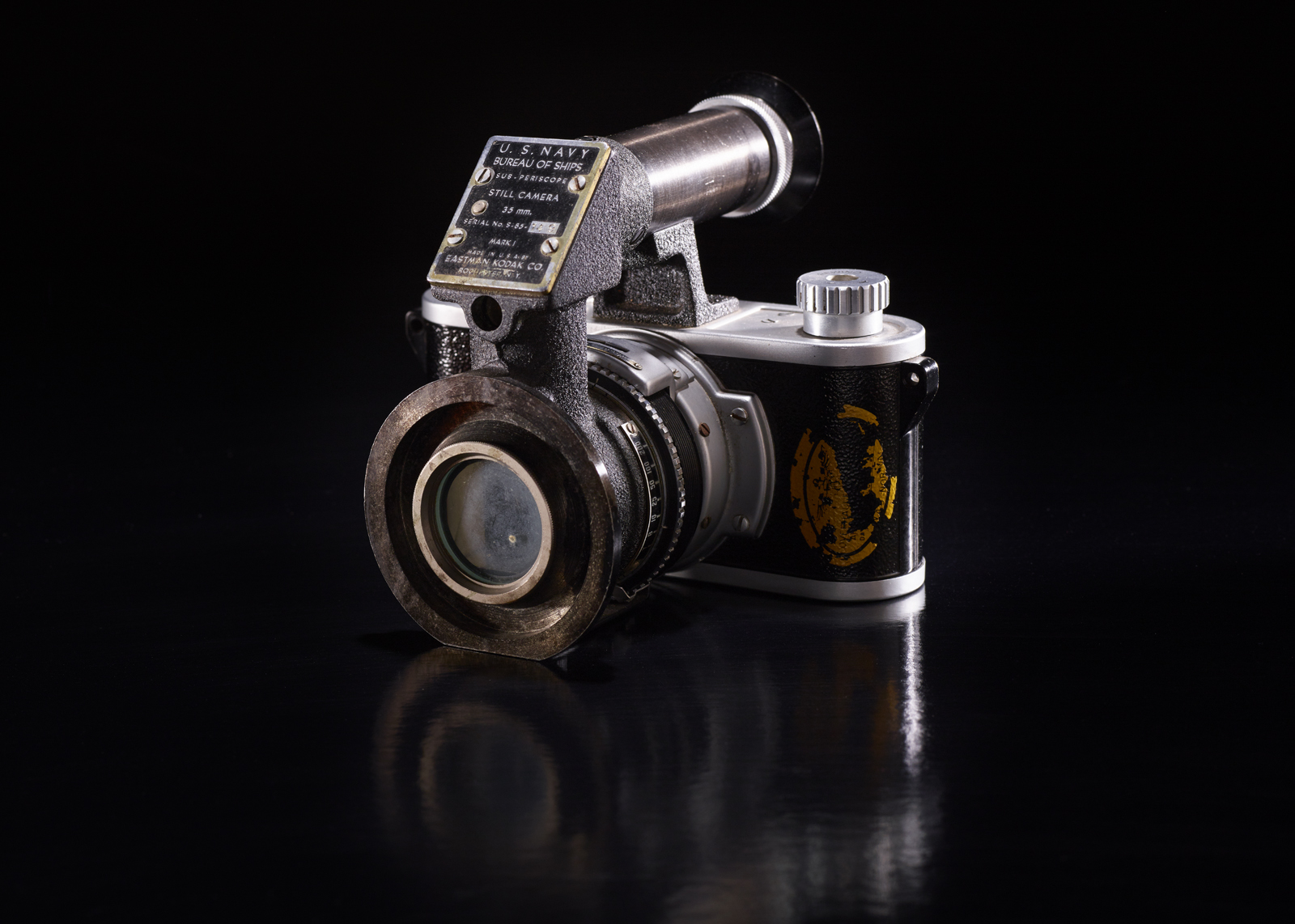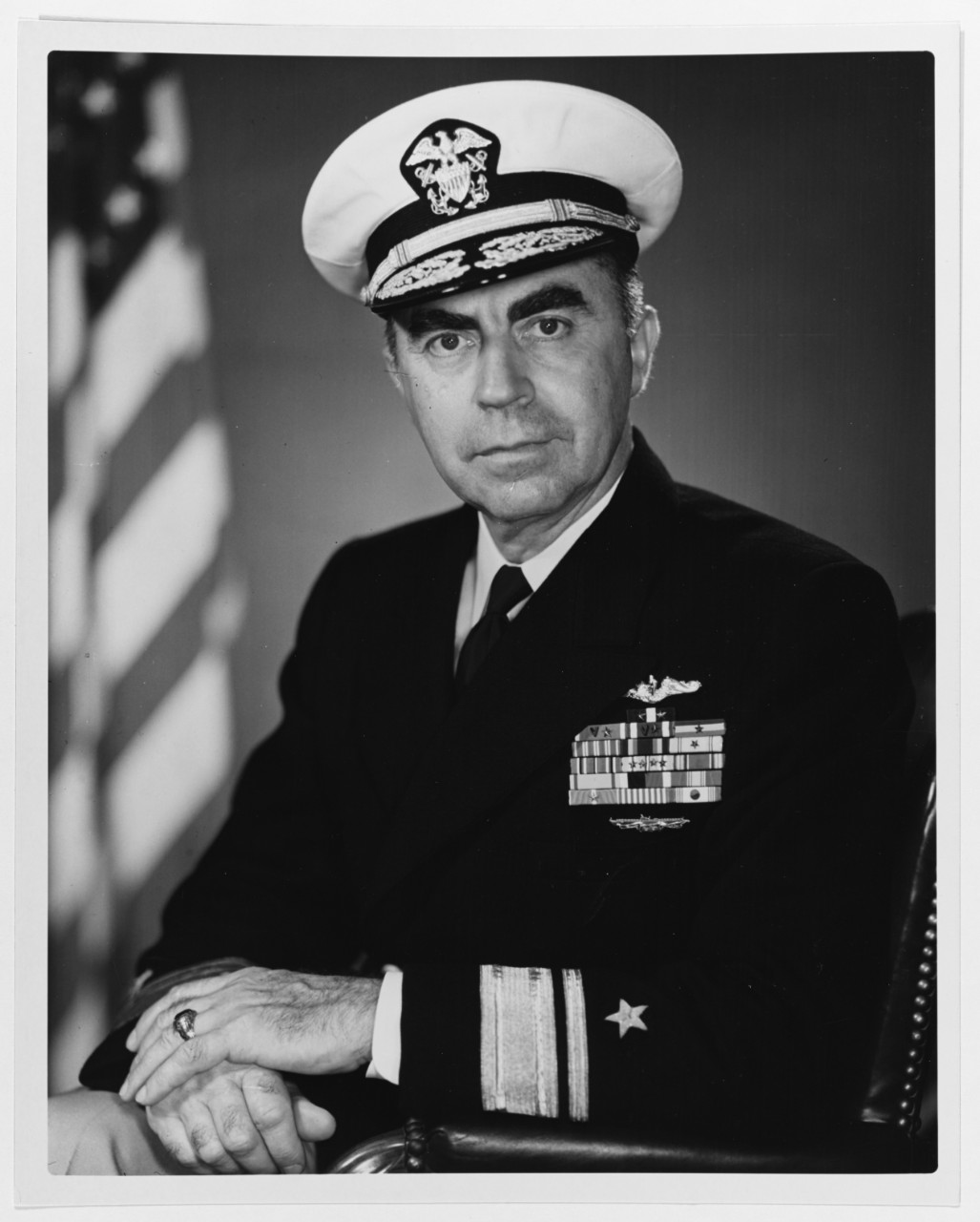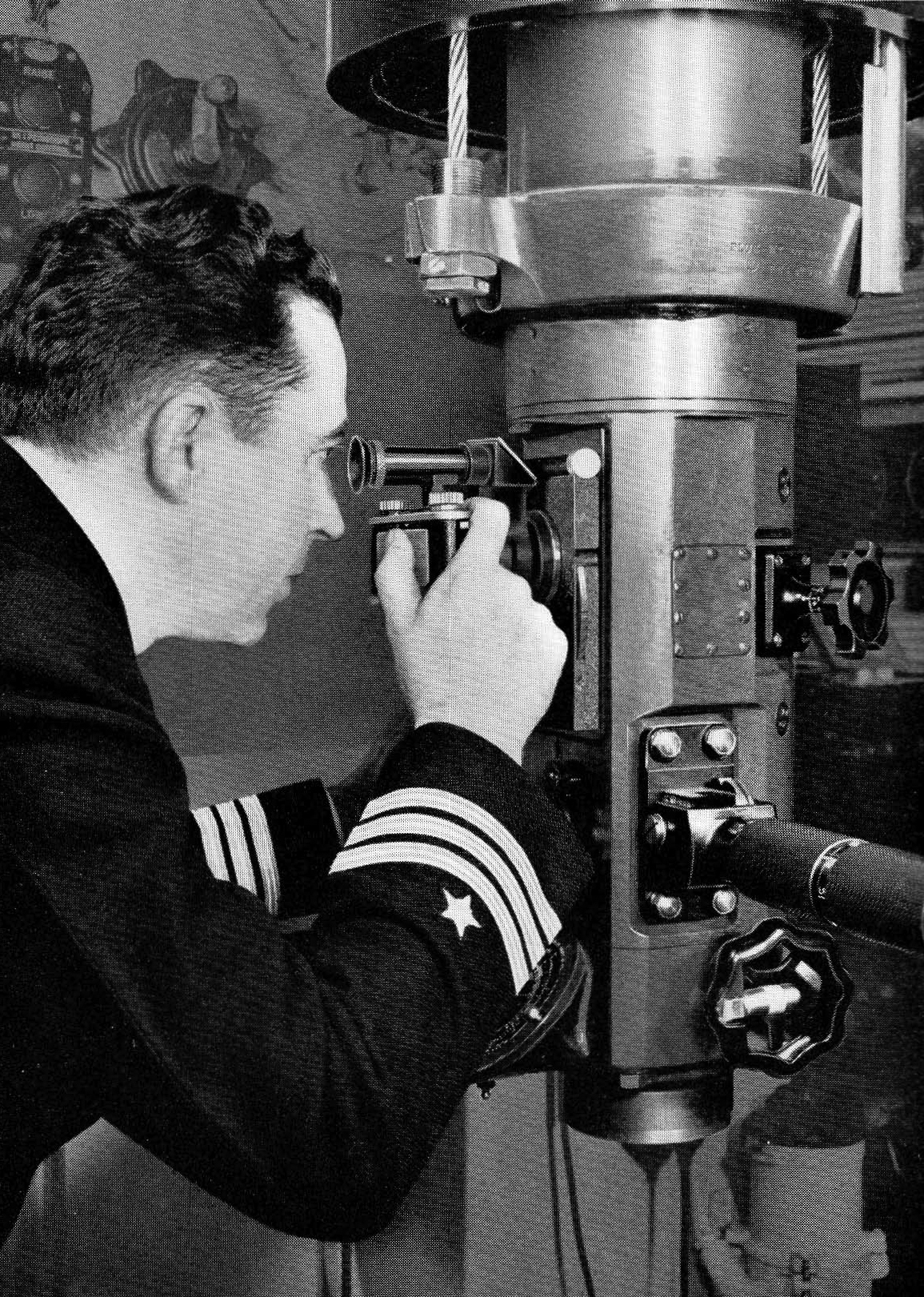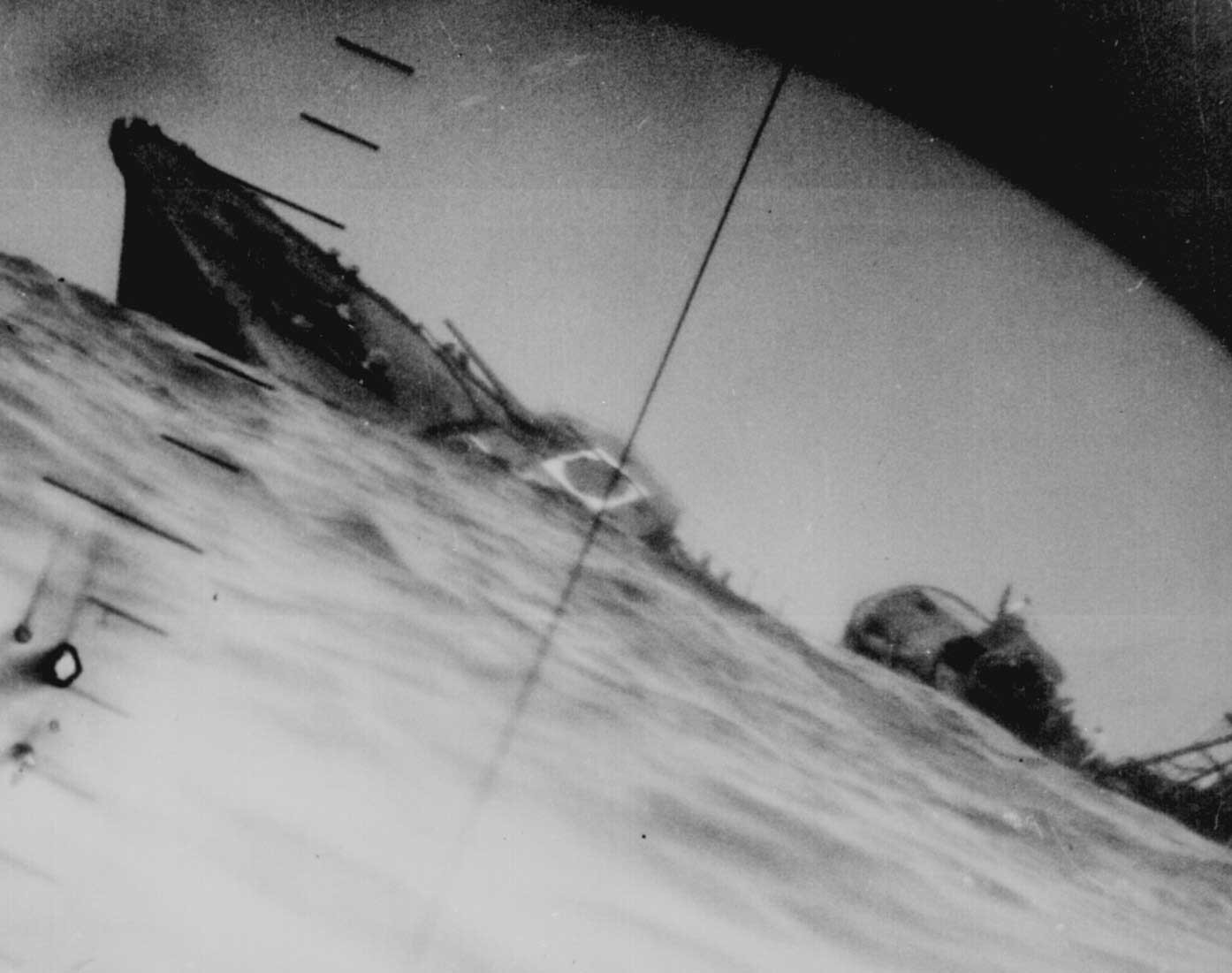From Memorial Day until Labor Day, The Mariners’ Museum is hosting $1 admission for every visitor. As part of our offerings, we are getting artifacts that aren’t normally on display out of their storage spaces to share with our visitors. I’ll admit that quite a few of my colleagues far outpace my maritime knowledge. If there is something I know, however, it is cameras. I did some digging into the collection and was surprised and thrilled to find something that falls into my area of expertise.

This is an Eastman Kodak 35mm Submarine Periscope Camera Mark I. Which might well be the longest title ever assigned to a camera. Before this little beauty came along, submariners were restricted to holding regular cameras up to their periscope lens, taking a photo and hoping for the best. It rarely, if ever, worked as planned.
Development
During WWII, Rear Admiral Lewis Parks decided it was time to address the issue and find an appropriate solution. RDML Parks knew that having a camera capable of working with a submarine’s periscope system could not only help with confirmation of an attack’s success but also as a low-level reconnaissance tool for enemy naval installations.

RDML Parks reached out to Eastman Kodak of Rochester, New York to develop this camera. Kodak was the authority in photographic technology for a large part of the 20th century. The result was a compact 35mm still camera as well as the Cine Kodak 16mm Movie Camera for shooting motion pictures.

Features
The periscope still camera came with a few unique features that helped to keep it compact. The most interesting of these is the use of a beam splitter positioned in front of the lens. The beam splitter divides incoming light so that a portion travels back into the shutter and the other part travels upward to strike a mirror, positioned at a 45-degree angle, then out through the eye-piece.
Other cameras of the WWII era often had viewfinders that were separate from the lens that directed light to the shutter. Some utilized a second lens(double lens reflex), like Rollicord cameras. Others had, manual, wire viewfinders sitting on top of the camera. By applying a beam splitter, the camera operator was able to use the camera and the periscope simultaneously.

The periscope camera was also usable as a handheld camera. Although, the operation manual stresses the difficulty of doing so. The only adjustable setting on this camera is the shutter speed. That means that the aperture is always the same and combined with no adjustable focal ring, the operator can only focus on subjects that are approximately 35 feet away.
For its flaws, the Eastman Kodak 35mm Submarine Periscope Camera Mark I is a marvel of imaging technology. It changed the nature of surveillance and marked a significant leap forward in the Navy’s ability to document warfare.